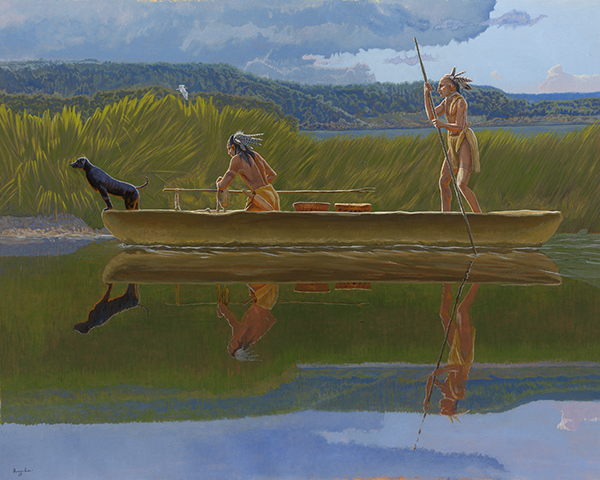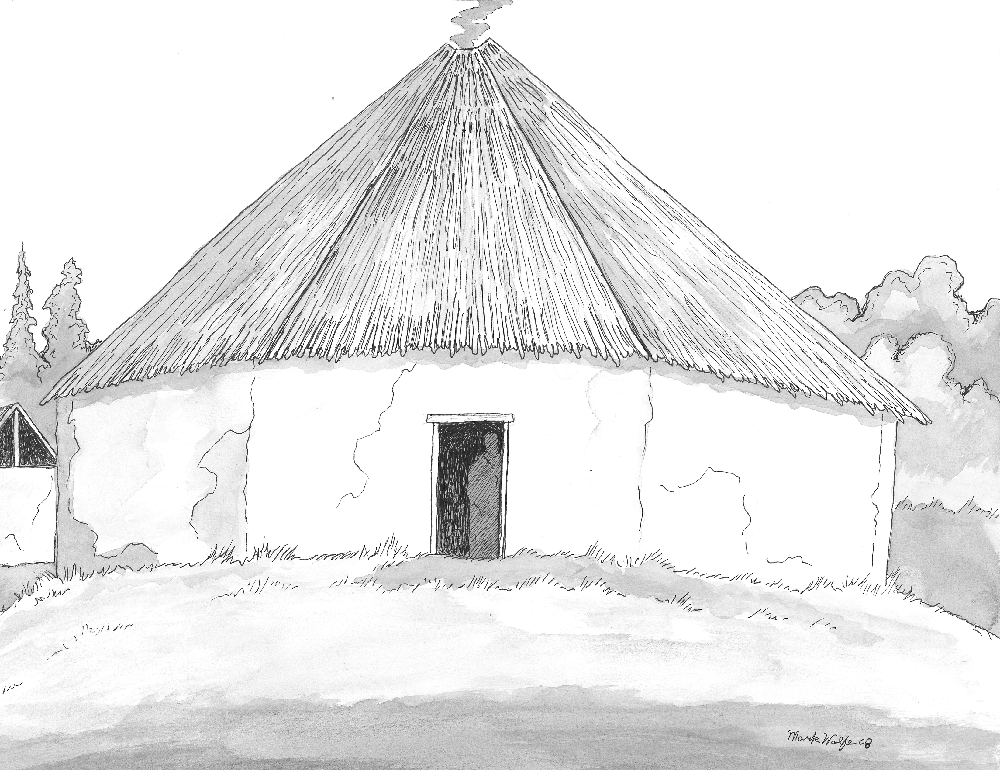
PRE-CONTACT CHEROKEE LIFESTYLE
Artwork:Cherokee Fishermen by Gebon Barnoski
Before Europeans arrived, Cherokee towns thrived independently. Each had its own council house, warriors, headmen, and headwomen, called Beloved Women. Cherokee society was egalitarian: it valued men’s and women’s economic and political contributions equally. While Cherokee towns were independent in operation, Cherokee land was communally held by the whole tribe. A matrilineal seven-clan social system provided structure to each group and connected each clan to Cherokee people across the region.
Artwork: Council House by Mark Wolfe
Clan names were related in some way to various attributes of animals. As Cherokee elders explain, our people recognized that animals demonstrate traits and characteristics that we wanted to emulate.
Before European contact, Cherokees practiced subsistence-based living; they grew, gathered, and hunted for what they needed for their communities to thrive, not for personal profit or surplus trade. As these practices depended on a flourishing environment, the tribe controlled more land than they lived upon. Women gathered edible nuts and plants. Men hunted to supplement food supplies and to provide hides for clothing and lodging.
